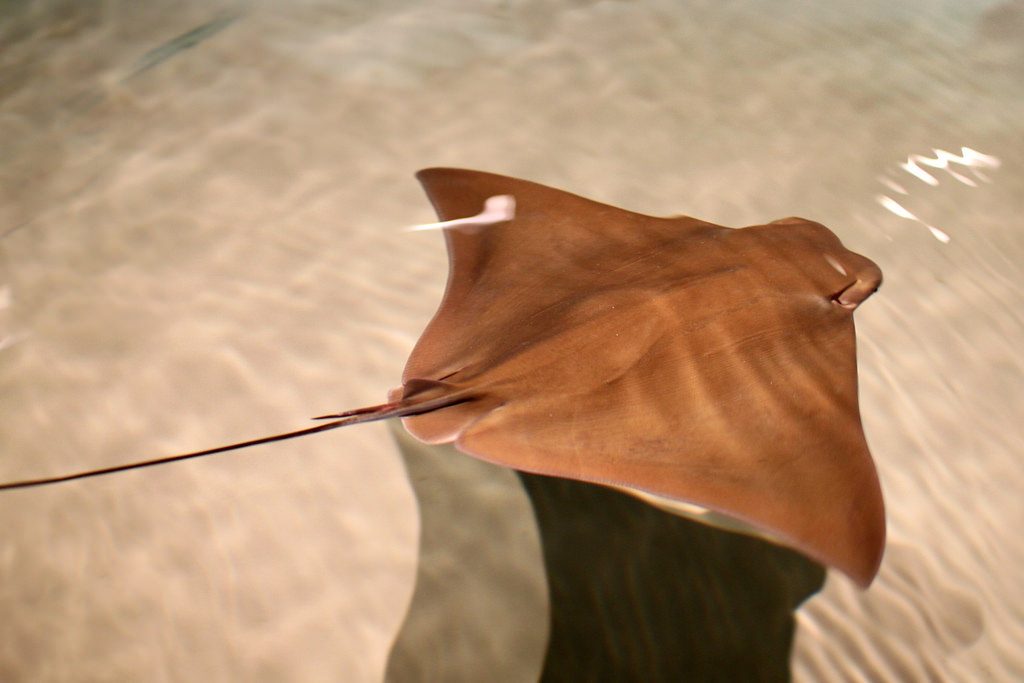On several occasions this week, beachgoers in local towns thought they might have come too close for comfort with a scene out of “Jaws.” In reality, while sharks most certainly patrol the waters off the Jersey Shore, this week’s sightings were of a less gargantuan predator.
Schools of cownose rays have been swimming up and down the coast of Ocean County all week. The sighting, at one point, prompted lifeguards in Brick to usher swimmers out of the water. Experts tell us, however, that rays are generally docile and aren’t looking to attack human beings.
“Generally, there’s not a lot to be worried about,” Dr. Paul Bologna, Director of the Marine Biology and Coastal Sciences Program at Montclair State University told Shorebeat. “They are extremely common. Every year they’re here.”
The rays sometimes move closer to shore in search of food – generally, shellfish – and can be mistaken for a shark.
“They can get extremely large,” Bologna said. “When they’re swimming in the water, it’ll look a little bit like a shark fin is coming up because they have a wingtip that comes up out of the water.”
A beachgoer from Lavallette sent a video to Shorebeat which chronicled his short encounter with the species this week.
“They’re pretty quick, and they move fairly fast,” Bologona said. “Their encounters with people aren’t that lengthy.”
If you spot a cownose ray in the water, don’t panic, Bologna advised.
“If you’re running and making a lot of movements, that would spook any animal. Be calm, but swim away from them,” he said. “Avoiding them is probably the best action. If they’re swimming along, they’re usually either chasing prey or migrating, searching for shellfish beds.”
A species of eagle ray, the cownose ray has a spine coated with a weak venom that causes symptoms similar to that of a bee sting, according to an NOAA Fisheries report. This differs from the southern stingray, which can whip its tail around when disturbed. The cownose ray generally swims in the water column, Bologna said, so it’s unlikely that a swimmer would step on one.
“They’re a little bit more of a warm water species, in general, which is why we get them during the summer,” Bologna said.

Advertisement

Police, Fire & Courts
Cops: Juvenile Arrested After 118mph Joy Ride in Seaside Heights, Toms River Kills 2

Seaside Heights & Seaside Park
Seaside Heights OKs ‘Pedacycle’ Tours for 2025 in Revived Experiment

Police, Fire & Courts
Cops: Juvenile Arrested After 118mph Joy Ride in Seaside Heights, Toms River Kills 2

Police, Fire & Courts
Ocean County Sheriff Establishes Drone Command Center in Seaside Heights Amid New Video







